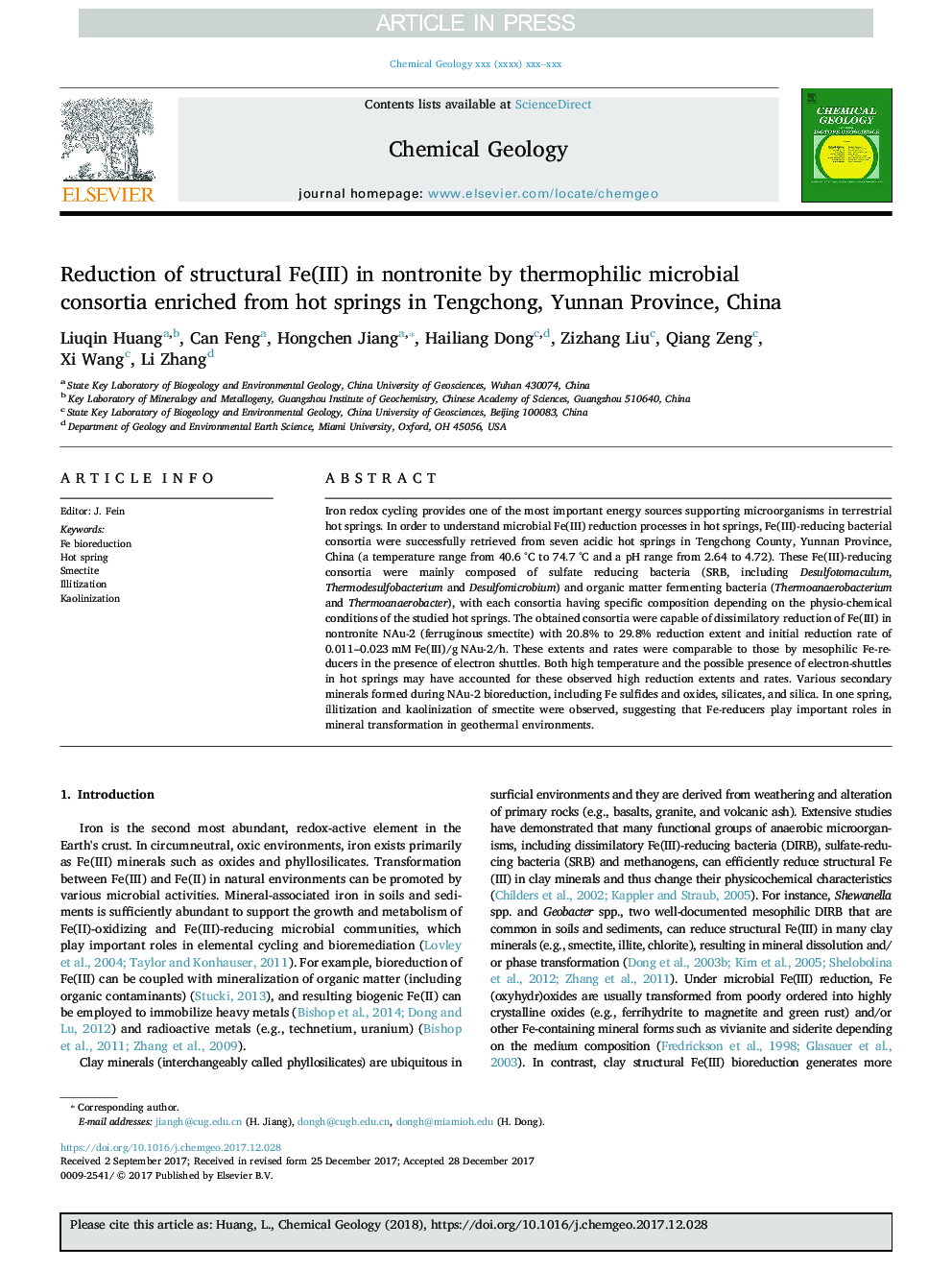| Article ID | Journal | Published Year | Pages | File Type |
|---|---|---|---|---|
| 8910373 | Chemical Geology | 2018 | 11 Pages |
Abstract
Iron redox cycling provides one of the most important energy sources supporting microorganisms in terrestrial hot springs. In order to understand microbial Fe(III) reduction processes in hot springs, Fe(III)-reducing bacterial consortia were successfully retrieved from seven acidic hot springs in Tengchong County, Yunnan Province, China (a temperature range from 40.6 °C to 74.7 °C and a pH range from 2.64 to 4.72). These Fe(III)-reducing consortia were mainly composed of sulfate reducing bacteria (SRB, including Desulfotomaculum, Thermodesulfobacterium and Desulfomicrobium) and organic matter fermenting bacteria (Thermoanaerobacterium and Thermoanaerobacter), with each consortia having specific composition depending on the physio-chemical conditions of the studied hot springs. The obtained consortia were capable of dissimilatory reduction of Fe(III) in nontronite NAu-2 (ferruginous smectite) with 20.8% to 29.8% reduction extent and initial reduction rate of 0.011-0.023 mM Fe(III)/g NAu-2/h. These extents and rates were comparable to those by mesophilic Fe-reducers in the presence of electron shuttles. Both high temperature and the possible presence of electron-shuttles in hot springs may have accounted for these observed high reduction extents and rates. Various secondary minerals formed during NAu-2 bioreduction, including Fe sulfides and oxides, silicates, and silica. In one spring, illitization and kaolinization of smectite were observed, suggesting that Fe-reducers play important roles in mineral transformation in geothermal environments.
Related Topics
Physical Sciences and Engineering
Earth and Planetary Sciences
Geochemistry and Petrology
Authors
Liuqin Huang, Can Feng, Hongchen Jiang, Hailiang Dong, Zizhang Liu, Qiang Zeng, Xi Wang, Li Zhang,
